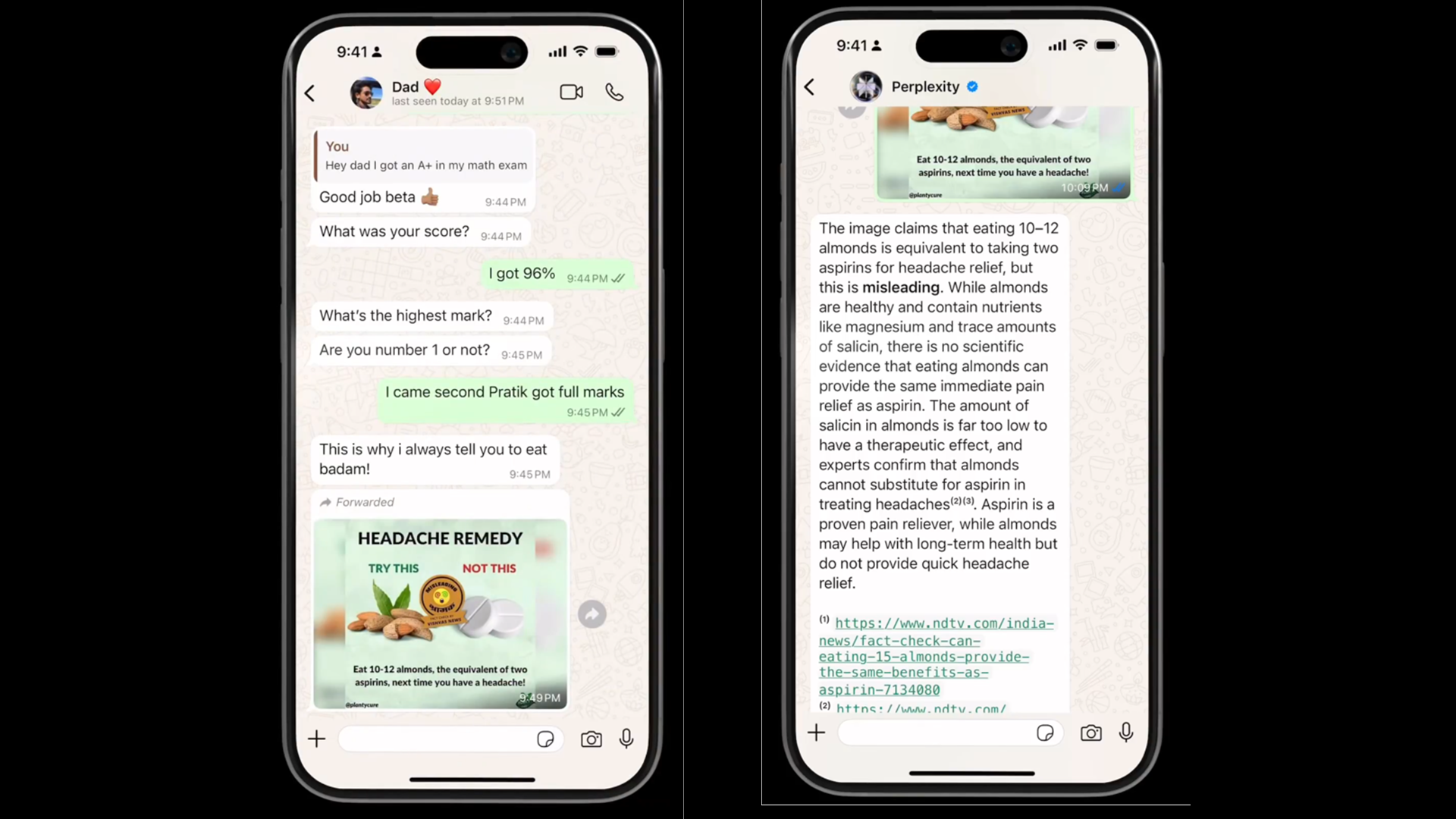Fact-Checking WhatsApp Posts: A Simple How-To Guide

Welcome to your ultimate source for breaking news, trending updates, and in-depth stories from around the world. Whether it's politics, technology, entertainment, sports, or lifestyle, we bring you real-time updates that keep you informed and ahead of the curve.
Our team works tirelessly to ensure you never miss a moment. From the latest developments in global events to the most talked-about topics on social media, our news platform is designed to deliver accurate and timely information, all in one place.
Stay in the know and join thousands of readers who trust us for reliable, up-to-date content. Explore our expertly curated articles and dive deeper into the stories that matter to you. Visit NewsOneSMADCSTDO now and be part of the conversation. Don't miss out on the headlines that shape our world!
Table of Contents
Fact-Checking WhatsApp Posts: A Simple How-To Guide
The ease and speed of WhatsApp make it a breeding ground for misinformation. From chain messages promising miracle cures to politically charged rumors, false information spreads rapidly. But you don't have to be a victim. This guide provides simple steps to fact-check those questionable WhatsApp posts before they impact you or your contacts.
Why Fact-Checking WhatsApp is Crucial
In today's digital age, WhatsApp has become a primary source of information for many, often bypassing traditional fact-checking processes. This makes it vital to develop critical thinking skills and employ effective verification techniques. Unverified information can lead to:
- Misinformed decisions: Health advice, financial tips, or political opinions based on false information can have severe consequences.
- Damaged relationships: Sharing false news can strain trust and relationships with friends and family.
- Spread of harmful narratives: Unverified claims contribute to the spread of harmful stereotypes and conspiracy theories.
- Increased anxiety and panic: Sensationalized or false news stories can cause unnecessary anxiety and panic.
A Step-by-Step Guide to Fact-Checking WhatsApp Messages
1. Assess the Source:
- Who sent it? Is it a trusted contact, or an unknown number? Be wary of messages from unverified sources.
- Look for identifying information: Does the message contain logos, links, or other identifying information that could lead you to the original source?
2. Reverse Image Search:
- Use Google Images: If the message contains an image, upload it to Google Images. This will show you where else the image has appeared online, helping to determine its authenticity and context.
- Try TinEye: TinEye is another powerful reverse image search engine that can often find the original source of an image, even if it's been slightly altered.
3. Check the URL (if any):
- Inspect the website: If the message contains a link, carefully inspect the website's URL and "About Us" section. Look for signs of bias or questionable information. Is it a reputable news source or a dubious blog?
- Look for grammatical errors and unprofessional design: Poor grammar and unprofessional website design are often red flags.
4. Consult Reputable Fact-Checking Websites:
- Use established fact-checkers: Numerous organizations dedicate themselves to debunking misinformation. Consult reputable fact-checking websites in your region or country. These websites often have comprehensive databases of previously debunked claims. Examples include Snopes, PolitiFact, and FactCheck.org.
5. Cross-Reference Information:
- Seek multiple sources: Don't rely on a single source to confirm information. Consult multiple reputable sources to verify the information's accuracy.
- Check multiple news outlets: See if the story is reported by several major news outlets. If not, it may indicate a lack of credibility.
6. Be Aware of Common Misinformation Tactics:
- Sensational headlines: Be wary of messages with exaggerated or sensational headlines designed to grab attention.
- Emotional appeals: Messages using strong emotional language (fear, anger, outrage) are often designed to manipulate you.
- Lack of evidence: Claims without evidence or credible sources should be treated with skepticism.
- Conspiracy theories: Be especially critical of messages promoting conspiracy theories.
7. Don't Forward Unverified Information:
- Think before you share: Always take time to fact-check before forwarding any message. Spreading misinformation, even unintentionally, can have significant consequences.
By following these simple steps, you can significantly reduce the spread of misinformation on WhatsApp and contribute to a more informed and responsible online community. Remember, being a responsible digital citizen means being proactive in your fact-checking efforts. Your vigilance helps protect yourself and others from the harmful effects of false news.

Thank you for visiting our website, your trusted source for the latest updates and in-depth coverage on Fact-Checking WhatsApp Posts: A Simple How-To Guide. We're committed to keeping you informed with timely and accurate information to meet your curiosity and needs.
If you have any questions, suggestions, or feedback, we'd love to hear from you. Your insights are valuable to us and help us improve to serve you better. Feel free to reach out through our contact page.
Don't forget to bookmark our website and check back regularly for the latest headlines and trending topics. See you next time, and thank you for being part of our growing community!
Featured Posts
-
 Shaun Weiss Shares Memories Of Ben Stillers Directing Style On The Set Of Heavyweights 1995
May 04, 2025
Shaun Weiss Shares Memories Of Ben Stillers Directing Style On The Set Of Heavyweights 1995
May 04, 2025 -
 Three Avalanche Stars Shine In Wild Game 6 Win Makar Takes The Lead
May 04, 2025
Three Avalanche Stars Shine In Wild Game 6 Win Makar Takes The Lead
May 04, 2025 -
 Ufc Fight Night 5 3 Bekoev Vs Loder Prediction Analysis And Preview
May 04, 2025
Ufc Fight Night 5 3 Bekoev Vs Loder Prediction Analysis And Preview
May 04, 2025 -
 The Barkley Jordan Debate A Finals Showdown Revisited
May 04, 2025
The Barkley Jordan Debate A Finals Showdown Revisited
May 04, 2025 -
 Gillian Robertsons Next Chapter A New Organization And Future Fights
May 04, 2025
Gillian Robertsons Next Chapter A New Organization And Future Fights
May 04, 2025
